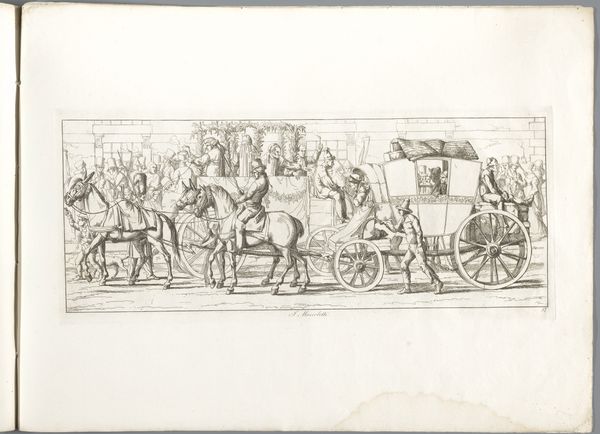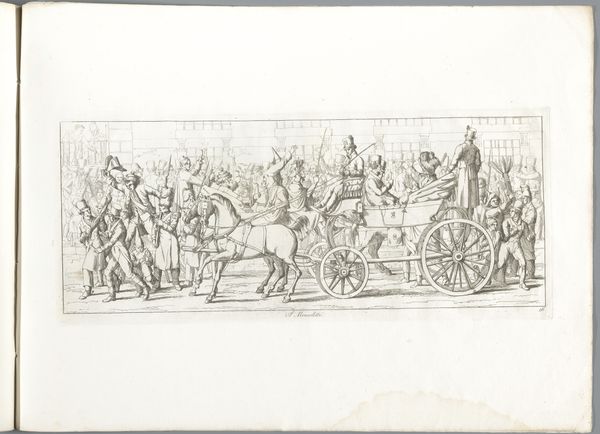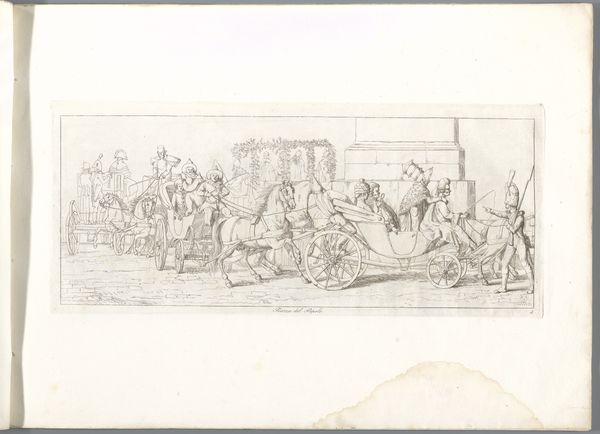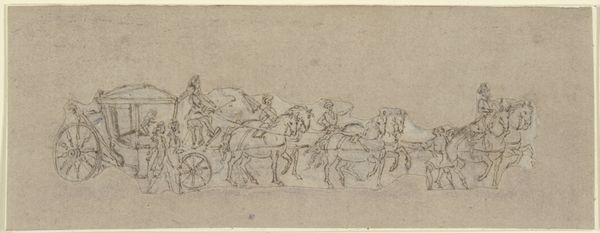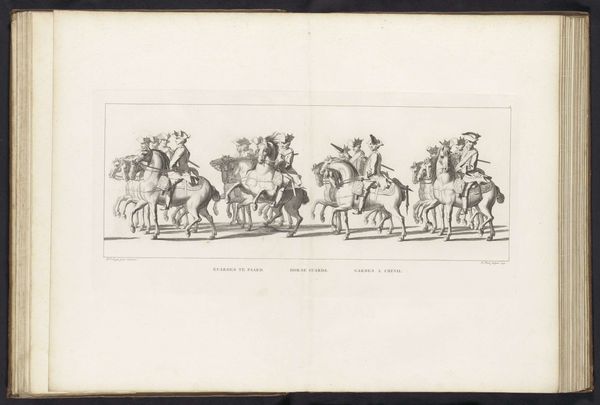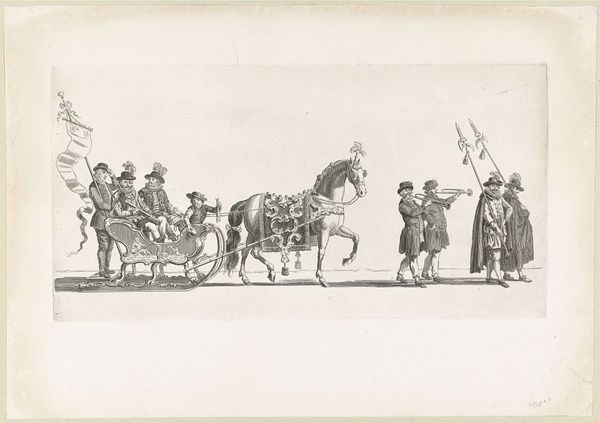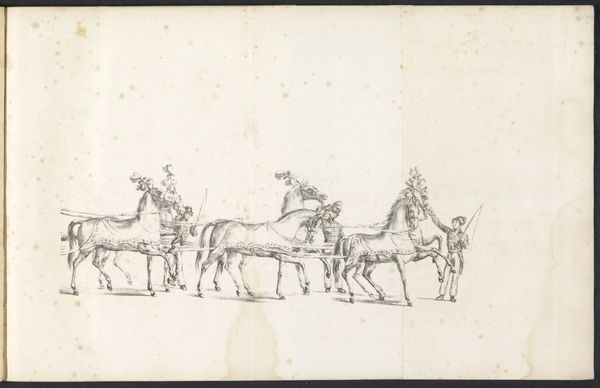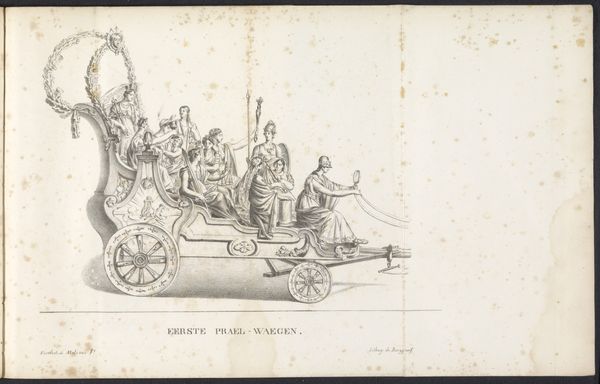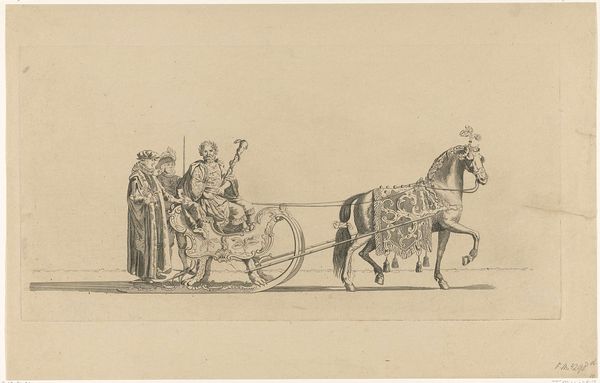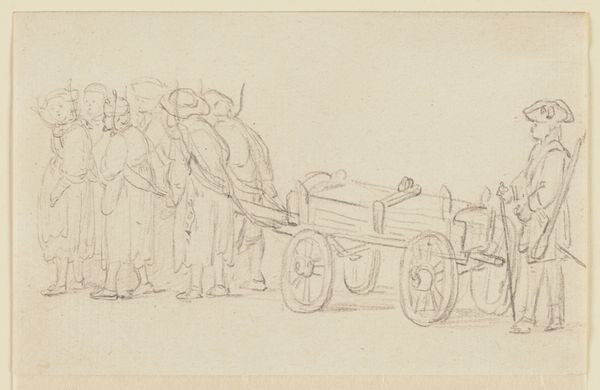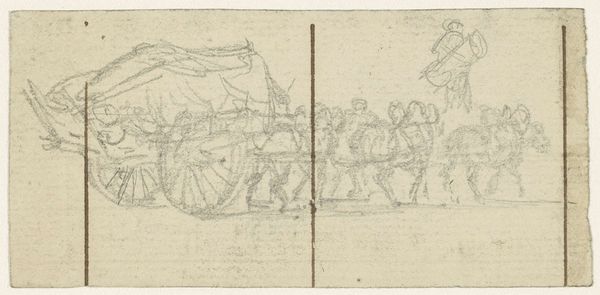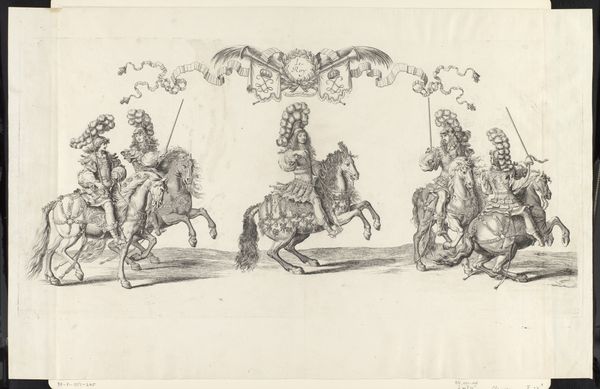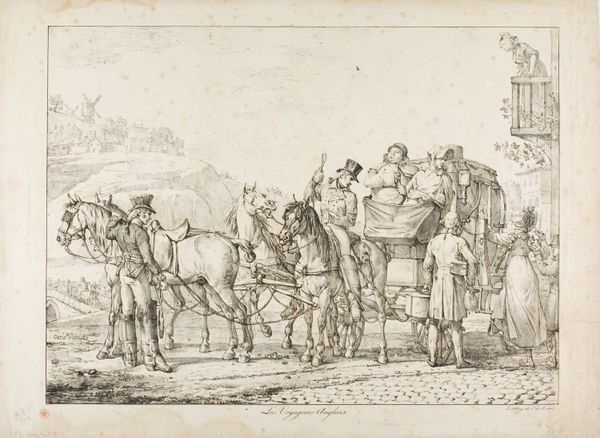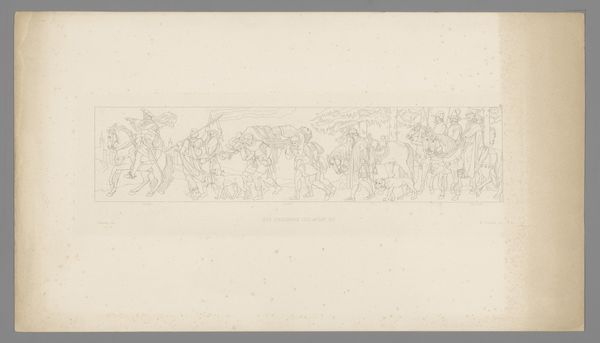
#
ink drawing
#
pen illustration
#
pen sketch
#
personal sketchbook
#
ink drawing experimentation
#
pen-ink sketch
#
pen work
#
sketchbook drawing
#
storyboard and sketchbook work
#
sketchbook art
Dimensions: height 205 mm, width 475 mm, height 413 mm, width 568 mm
Copyright: Rijks Museum: Open Domain
Curator: Before us is "Kaarsenspel," or "Candle Game," an ink drawing completed around 1820 by Carl Gustaf Hjalmar Mörner. It's quite an intricate piece for a personal sketchbook, wouldn't you agree? Editor: My first impression is that this feels performative. A procession, perhaps? The lines are tight and controlled, giving the whole scene a formal air. The use of only pen and ink further emphasizes the starkness of the staging, and my eye just dances with the shapes of the light colored figures against the dark. Curator: Precisely, performative is apt. Look closely at the central figure in the carriage. Observe the visual language in play—he is elevated, both literally on the carriage roof and through the composition. That whip is clearly not incidental. Editor: Ah, the semiotics of power. The raised whip certainly commands attention and projects an aura of control. It seems almost a deliberate, though economical, visual marker of authority. The carriage, of course, becomes another symbolic layer—a mobile throne. Curator: Indeed, and notice how the repetition of the figures, and in particular their headdressing— the high hats– functions almost as a pattern, a structural device that reinforces the regimented social order. There’s a strong diagonal line established that drives the action across the frame, directing our view. Editor: The figures, almost doll-like, contribute to a deeper reading. Their identical dress and stiff posture speak volumes about conformity. It's the suppression of the individual through uniformity, an incredibly evocative symbol in the context of its time. But, consider the less privileged ones, some in a different regiment and their relationship with the authority on display; their role is more than decorative. Curator: Excellent observation. The contrast serves as a dialectical counterpoint, subtly destabilizing the image’s apparent affirmation of hierarchy. Editor: Yes, this piece becomes quite a meditation on control and its public spectacle. A window into not just art history, but how power crafts its image for posterity. Curator: I’ve also gained an awareness of how carefully composed a seeming ‘snapshot’ is, reminding me how important looking closely at simple means can be in revealing complex structures.
Comments
No comments
Be the first to comment and join the conversation on the ultimate creative platform.
